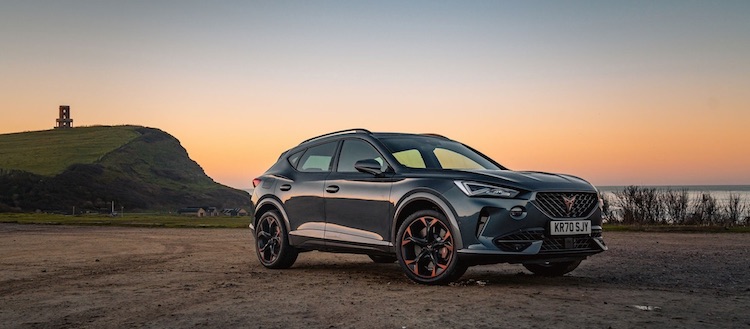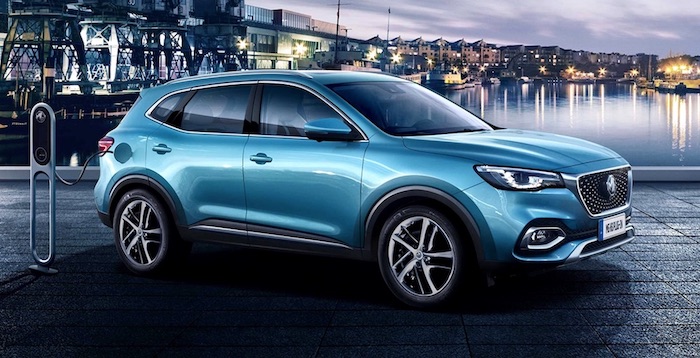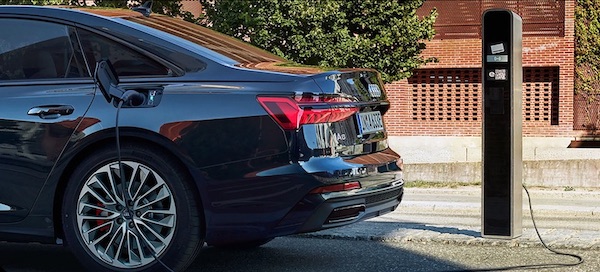Overview
SEAT CUPRA, S.A.U, simply known as CUPRA, is the high-performance motorsport subsidiary of SEAT S.A., Spain’s first family car manufacturer. The automotive company was founded in 1950 and is headquartered in Martorell, Spain.
In 1986, SEAT was sold to the German automotive group, Volkswagen A.G. CUPRA was previously known as SEAT Sport. The high-performance CUPRA brand was created in 2018. The manufacturer is committed to becoming a fully-electric brand by 2030. CUPRA is expected to introduce the all-electric CUPRA Terramar and the all-electric CUPRA UrbanRebel in due course. The company has the following portfolio of plug-in hybrid electric vehicles (PHEVs) and battery-electric vehicles (BEVs):
- CUPRA Formentor e-HYBRID
- CUPRA Leon e-HYBRID
- CUPRA Leon Estate e-HYBRID
- All-electric Cupra Born
- All-electric Cupra Tavascan
Electric Cars: The Basics
For those of you new to zero-emission electric driving, we recommend a read of the following articles:
Sign up to the e-zoomed Electric Living newsletter
The Cupra Formentor PHEV SUV
The production version of the Cupra Formentor compact SUV was unveiled in 2020, with production commencing in September 2020. The SUV is marketed as a ‘Coupé SUV’ by the Spanish automotive manufacturer. The Formentor SUV is also available as a plug-in hybrid electric vehicle (PHEV).
As is expected from the copper Cupra badge, the Formentor plug-in hybrid sporty exterior stying certainly attracts attention. Put simply, it is good looking! The plug-in hybrid electric SUV is positioned to combine performance and efficiency, to include, improved fuel economy and lower tailpipe emissions.
The Formentor PHEV has tailpipe emissions up to 32g (CO2/km) compared to 193g (CO2/km) for the CUPRA Formentor VZ3 TSI 4Drive Petrol 310 variant. A reduction of over 80% in tailpipe emissions. This is reflected in the significantly lower Benefit-in-Kind (BiK-12%) tax rate for the PHEV.
The Cupra Formentor EV has a claimed fuel economy up to 235.4 mpg. Though, real-world fuel economy will be lower than claimed economy, using the pure electric mode on a regular basis will improve the fuel economy and lower the cost of driving. If the plug-in hybrid is driven primarily on the combustion engine, then expect a fuel economy closer to 40 mpg.
The Cupra PHEV has a 12.8 kWh onboard EV battery, with a WLTP certified zero-emission electric range of up to 34 miles. Depending on driving style, weather condition, road condition, passenger load, wheel size, speed, services used in the EV, expect a real-world pure electric range closer to 27 miles.
However, that would be more than sufficient for most day-to-day commutes i.e. driving emission-free and also saving money. The running cost per mile of an EV is far lower than a petrol or diesel car. Depending on where and when an electric car is charged, the cost per mile will average between 5 pence and 10 pence.
We at e-zoomed recommend a ‘topping up’ approach to EV charging. This way, EV range is available to use and regular charging also improves the long-term maintenance of the onboard EV battery. Cupra offers a 8 years or 100,000 miles warranty.
Though the PHEV cannot be charged using fast DC charging, it can be fully charged in under four hours using a dedicated home EV charging station, like the Easee home EV charging station. The Cupra plug-in electric car has a 3.6 kW onboard charger. We discourage the use of a domestic 3-PIN plug for charging an electric car.
The Cupra plug-in hybrid pairs the 1.4 e-HYBRID DSG-6 petrol engine with an electric motor. The all-wheel drive plug-in electric SUV can achieve 0-62 mph in 7.8 seconds (maximum power: 204 PS). The top speed of the EV is 127 mph.
The interior is high quality and practical. Adults seated on the rear seats have ample legroom and headroom. The copper details are visible through the cabin. However, due to the hybrid hardware, the boot space is smaller (345 L) compared to the conventional petrol Formentor.
Standard equipment includes: 12″ navigation system, full link smartphone integration (mirror link, wireless Apple CarPlay, wired Google Android Auto), keyless start, keyless entry, driver alert system, dynamic road sign display, high beam assist, dynamic headlight range control and more.
The Formentor PHEV does not qualify for the UK government plug-in car grant. Bottom-line, electric driving is good for the environment and the wallet. You can lease electric vehicles (EVs) via e-zoomed at very competitive prices!
| PROS | CONS |
|---|---|
| Attractive, distinctive, stylish exterior. Also, practical for families. | Limited to a 3.6 kW on-board charger. DC charging not available |
| Decent emission-free range (up to 34 miles) | Boot space limited (345 L) |
| Low tailpipe emissions | An expensive PHEV compared to alternatives |
The Cupra Formentor PHEV SUV (credit: Cupra)
| At A Glance | |
|---|---|
| EV Type: | Plug-In Hybrid Electric Vehicle (PHEV) |
| Body Type: | SUV |
| Plug-In Car Grant (PiCG): | Not Available |
| Engine: | Petrol-Electric |
| Available In UK: | Yes |
| Variants (4 Options) |
|---|
| Cupra Formentor V1 eHybrid (from £37,770) |
| Cupra Formentor V2 eHybrid (from £39,810) |
| Cupra Formentor VZ1 eHybrid (from £40,425) |
| Cupra Formentor VZ2 eHybrid (from £42,185) |
| EV Battery & Emissions | |
|---|---|
| EV Battery Type: | Lithium-ion |
| EV Battery Capacity: | Available in one battery size: 12.8 kWh |
| Charging: | DC charging not available. Onboard charger 3.6 kW (0% – 100%: 3 hrs 33 mins) |
| Charge Port: | Type 2 |
| EV Cable Type: | Type 2 |
| Tailpipe Emissions: | 26 – 32g (CO2/km) |
| EV Battery Warranty: | 8 years or 100,000 miles |
| Average Cost Of Residential Charging | |
|---|---|
| Battery net capacity : 8.8 kWh | £1.27 |
| Battery net capacity : 11.6 kWh | £1.67 |
| Battery net capacity : 12.0 kWh | £1.73 |
| Battery net capacity : 13.10 kWh | £1.89 |
| Battery net capacity : 14.10 kWh | £2.03 |
- Note 1: The average cost of residential electricity in the UK varies depending on the region, supplier and type of energy used. An average for the UK is 14.40 p/kWh.
- Note 2: Not all EV manufactures make available the data on net EV battery capacity, and in a number of instances the EV battery capacity advertised, does not state if it is gross or net capacity. In general, usable EV battery capacity is between 85% to 95% of the gross available capacity.
| Charging Times (Overview) | |
|---|---|
| Slow charging AC (3 kW – 3.6 kW): | 6 – 12 hours (dependent on size of EV battery & SOC) |
| Fast charging AC (7 kW – 22 kW): | 3 – 8 hours (dependent on size of EV battery & SoC) |
| Rapid charging AC (43 kW): | 0-80%: 20 mins to 60 mins (dependent on size of EV battery & SoC) |
- Note 1: SoC: state of charge
| Dimensions | |
|---|---|
| Height (mm): | 1510 |
| Width (mm): | 1839 |
| Length (mm): | 4450 |
| Wheelbase (mm): | 2680 |
| Turning Circle (m): | 11.4 |
| Boot Space (L): | 345 |
| 1.4 e-HYBRID DSG-6 (V1 & V2) | |
|---|---|
| EV Battery Capacity: | 12.8 kWh |
| Pure Electric Range (WLTP): | 34 miles |
| Electric Energy Consumption (kWh/100km): | 14.5 – 15.7 |
| Fuel Consumption (MPG): | 201.8 – 235.4 |
| Charging: | DC charging not available. On-board charger 3.6 kW AC: (0% – 100%: 3 hrs 33 mins) |
| Top Speed: | 127 mph |
| 0-62 mph: | 7.8 seconds |
| Drive: | All-wheel drive (AWD) |
| Max Power (PS): | 204 |
| Torque (Nm): | 350 |
| Transmission: | Automatic |
| Seats: | 5 |
| Doors: | 5 |
| Weight (kg): | 1,681 |
| Colours: | 10 |
| NCAP Safety Rating: | Five-Star |
While e-zoomed uses reasonable efforts to provide accurate and up-to-date information, some of the information provided is gathered from third parties and has not been independently verified by e-zoomed. While the information from the third party sources is believed to be reliable, no warranty, express or implied, is made by e-zoomed regarding the accuracy, adequacy, completeness, legality, reliability or usefulness of any information. This disclaimer applies to both isolated and aggregate uses of this information.







































